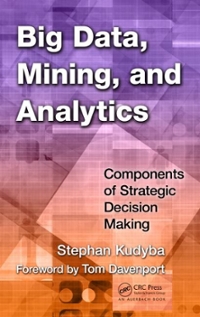Question
Instructions Write a program that implements the A* algorithm to find a path from any two given nodes. Please use Java! Problem Overview & Algorithm
Instructions Write a program that implements the A* algorithm to find a path from any two given nodes. Please use Java! Problem Overview & Algorithm Description In a fully-observable environment where there are both pathable and blocked nodes, an agent must find a good path from their starting node to the goal node. The agent must use the A* algorithm to determine its path. For this program, you must use the Manhattan method for calculating the heuristic. Remember: your heuristic function is a representation of how good or close you are to the goal state. Program Requirements No graphics are required for this program but using them will help you with debugging and problem solving. Your environment should be a 15x15 tile-based world that randomly generates nodes that are unpathable (blocks) in 10% of the nodes. This should be done each time the program compiles ensuring that there are different environment makeups each run. The program should display the generated environment when the program runs, and should allow the user to select a starting node and goal node. This can be done via text input into the console or with a GUI. Once the start and goal nodes have been defined, the program should run the A* algorithm to find a path. The path should be displayed (series of [x,y] nodes, highlighting nodes, or actually moving the agent) if one exists, or a message indicating that a path could not be found. The user should be able to continue specifying starting and goal nodes after paths have been found.
Here is the node.java code
public class Node { private int row, col, f, g, h, type; private Node parent;
public Node(int r, int c, int t){ row = r; col = c; type = t; parent = null; //type 0 is traverseable, 1 is not } //mutator methods to set values public void setF(){ f = g + h; } public void setG(int value){ g = value; } public void setH(int value){ h = value; } public void setParent(Node n){ parent = n; } //accessor methods to get values public int getF(){ return f; } public int getG(){ return g; } public int getH(){ return h; } public Node getParent(){ return parent; } public int getRow(){ return row; } public int getCol(){ return col; } public boolean equals(Object in){ //typecast to Node Node n = (Node) in; return row == n.getRow() && col == n.getCol(); }
public String toString(){ return "Node: " + row + "_" + col; } }
Step by Step Solution
There are 3 Steps involved in it
Step: 1

Get Instant Access to Expert-Tailored Solutions
See step-by-step solutions with expert insights and AI powered tools for academic success
Step: 2

Step: 3

Ace Your Homework with AI
Get the answers you need in no time with our AI-driven, step-by-step assistance
Get Started


